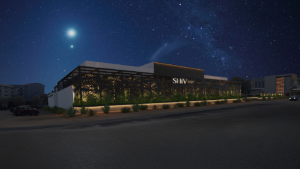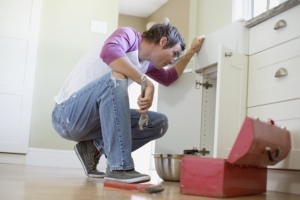Does desert living have you feeling dry and hot?
Moving to a dry climate can be a shock to the system if you’re not prepared. The dry weather can dry out your skin, furniture, and other belongings in your home. The heat can leave you sweaty and overheated.
Learning ways to deal with a hot, dry climate makes your new desert lifestyle more enjoyable.
1. Keep Your HVAC System in Good Shape
Having an air conditioner than works well and runs efficiently helps you stay cool and saves you money. Change the filters regularly to keep them clean to ensure ample airflow and better cooling.
If you notice strange sounds or your air conditioning isn’t keeping up, contact an HVAC expert to fix the problem early. Replacing an old, inefficient HVAC system that can’t keep up with your demands can make your home more comfortable and save money on utility bills.
2. Run a Humidifier
When you live in a dry climate, your indoor air also feels dry. This not only causes dry skin and possibly a dry air cough, but it can also cause damage inside your home. Wood and other surfaces can dry out from the lack of moisture in the air.
One way to boost indoor moisture is by using humidifiers throughout your home. Finding the best humidifier based on the size of your room and your needs improves the feel of your environment. Whole house humidifiers use one unit to add moisture throughout the home while smaller humidifiers moisturize one room.
3. Stay Hydrated and Moisturized
You know that drinking water is important to keep your body healthy, but hydration is especially important when you move to a dry climate. You can quickly become dehydrated if you don’t drink water throughout the day. Drinking cold water and staying hydrated can help you feel more comfortable and cool.
Drinking plenty of water helps your skin stay more hydrated. You can also help by frequently applying moisturizer. Use moisturizers and lotions designed for your type of skin to help yourself stay hydrated.
4. Shade Your Vehicles
Inside of a closed vehicle, the temperature can soar much higher than the outside temperature. When you get into an overheated car, you feel instantly hot. Some of the surfaces, such as the steering wheel or metal on seat belts, can burn your skin.
Parking your vehicle in the shade, either from trees or a structure such as a garage or carport, can help lower the interior temperature. This can make it more comfortable for you when you enter your vehicle.
You can also help keep your car cooler by using a reflective windshield shade. It bounces sunlight away from the car to prevent it from heating up as quickly or as much.
5. Improve Your Home
If your home has cracks or gaps along things such as windows, foundations, cable lines, and dryer vents, the hot outdoor air can find its way inside the home. Poor insulation can also let hot outside air in while your cool indoor air leaks outside.
Bad windows can also cause heat transfer that wastes energy and makes your home feel hotter. Your windows could cost you 25 to 30% of your heating and cooling energy because of heat transfer.
Fixing those weak areas in your home can make your indoor environment feel more comfortable. Sealing up leaks can also help you hold onto the humidity you create inside your home so the air doesn’t feel as dry.
6. Limit Indoor Heat Generating Items
Think about the things you do indoors that create heat or dry out the air. Drying clothes, baking, using a dishwasher, and even running lights can increase your indoor temperature.
You can limit the heat through some of those activities. Replacing heat-generating incandescent bulbs with cool, energy-efficient bulbs keeps your home cooler and saves you money.
Try hang-drying your clothes instead of using your dryer all the time. Washing dishes by hand can keep your home more comfortable.
Cooking outdoors on a grill is a good alternative. Pressure cookers and slow cookers often create less heat in the home than a stove or oven. You can also cook large batches of food once or twice a week and reheat the food in the microwave.
When you have to use appliances that create heat, think about when you use them. Run those items at night when it’s naturally cooler to avoid heating up the home and overworking you’re air conditioning.
7. Use Nature to Your Advantage
Dry desert air doesn’t have much water vapor to help trap hot or cold air. That means at night, the heat from the day doesn’t stick around long. The nighttime temperatures often dip significantly once the sun goes down, which means it feels cool at night.
Opening your windows when it starts to cool off lets in that cool air. This can cool off your home naturally without running your air conditioning.
The same effect works the opposite way. The dry air won’t trap the cool nighttime air, so as soon as the sun comes up again, the environment gets very hot very quickly.
Shut your windows in the morning before the temperature starts to rise. This helps hold that cold nighttime air inside your house.
Closing your window treatments can also help. This is especially important for windows where there’s direct sunlight. The sun heats up the room quickly unless you block it with your blinds.
8. Keep Air Moving
Stale air that doesn’t move feels uncomfortable and hotter. Getting airflow going can help you feel cooler without lowering your thermostat too much. Turn on ceiling fans and floor fans to generate a breeze that feels cooler.
9. Time Outdoor Activities
Being outdoors in the heat and dry air can feel uncomfortable. When possible, time outdoor activities early in the morning or late in the evening when the temperature is lowest. You’ll feel cooler and reduce your risk of heat-related illnesses.
When you have to be outdoors during the day, try to limit time outdoors and stick to the shade when possible. Wearing clothes that cover your skin or using an umbrella to block the sun can help. Misting yourself with cool water and staying hydrated can also help you feel comfortable.
Living in a Dry Climate
Living in a dry climate can take some adjustment, but it doesn’t have to be uncomfortable. Accounting for the desert heat and dryness can ease some of the discomfort as you get used to desert life.
Head to our archives for more useful tips for the home.




